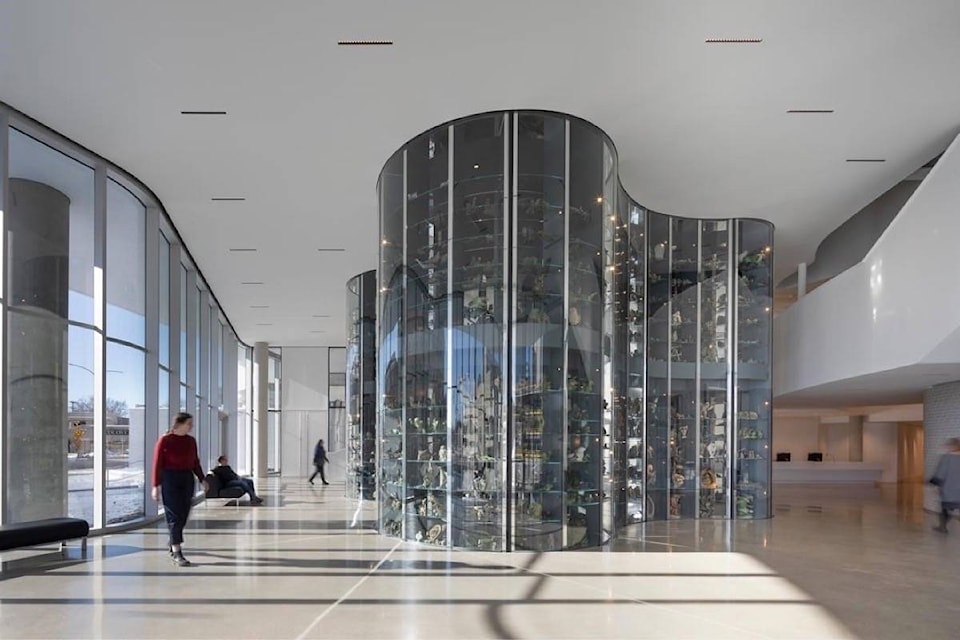WINNIPEG — Qaumajuq, a $65-million Inuit art centre that opens Saturday and is billed as the largest public collection of Inuit art in the world, is not only impressive in scope.
It’s also something of an immersive experience.
The building’s exterior, undulating and white, has the look of snowdrifts. Its interior — with rounded white walls, skylights and extremely high ceilings — bears the feeling of Arctic tundra with an almost endless horizon. In some areas, large glass display cubes give off an icy look.
“The architecture alone is an amazing piece of art because it really captures the Arctic,” remarked Maureen Gruben, an artist based in Tuktoyaktuk in the Northwest Terroritories, whose work is among the thousands of pieces on display.
Qaumajuq is an Inuktitut word that translates into “it is bright. It is lit.” The main gallery space is called Qilak, meaning sky.
“When you come in and … see how wide open and airy and almost cloud-like the main space is, the name Qilak makes a lot of sense,” said Heather Igloliorte, co-chair of the Winnipeg Art Gallery’s Indigenous advisory circle. She is also co-curator of the centre’s inaugural exhibit called INUA, which stands for Inuit Nunangat Ungammuaktut Atautikkut, or Inuit Moving Forward Together.
Qaumajuq holds more than 14,000 pieces in the 3,700-square metre building attached to the Winnipeg Art Gallery.
Having that much room means art from across the circumpolar world and ranging from traditional soapstone carvings and textiles to new media pieces the size of a shipping container can be shown. One piece is, in fact, a shipping container for people to walk inside and see murals and a video display.
“There are art galleries all throughout the Arctic, but of course they’re not on this kind of scale,” Igloliorte said.
“It’s really special that there is a place where all the regions … can show their work together.”
Gruben has a piece on display called Waiting for the Shaman. It is made of dozens of polar bear bones and resin, coloured and arranged in an almost complete circle with one section open.
“The polar bear has been a very important part of our lifestyle and environment,” she says. “So I would hope that it would invoke stories about hunting and living off the land … and the condition of the ice during this time of climate change.”
And while Qaumajuq is far south of Inuit territory, art gallery officials say its location means more people will be able to see the art. They hope the centre builds a bridge to better connect the North with southerners.
Winnipeg and the Hudson’s Bay Co. helped build the global market for Inuit art several decades ago. Gruben suggested Winnipeg is a natural fit, given its long-standing ties to the North.
“It’s kind of the hub for the North, and it always has been the trade centre.”
This report by The Canadian Press was first published March 26, 2021
Steve Lambert, The Canadian Press
